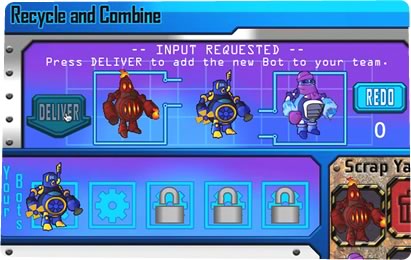
The RoboRiot game addresses two common misconceptions about genetics among students—that randomness is relative, and that a dominant trait is stronger (more powerful) than a recessive one. RoboRiot can serve as a metaphor or model for several key concepts in Mendelian genetics, including probability, sex cells, complex genetic patterns, and natural selection. The game is a conventional one, whose play mechanics are familiar to many students: Players recycle robots to rescue and disarm other robots that have run amok. There are various models of robots, each with a single function—as represented by a single “power"—and the distribution of powers among robots is not hierarchical. In other words, there is no “strongest” robot. Successfully creating and playing one’s team of robots requires strategic thinking about the relationships among heritable traits.
We have made randomness central to the gameplay activity. When recycling or deploying their robots, players experience the element of randomness in their action choices. The logic of the robot models and their relative powers is like the classic “rock-paper-scissors” game: circular, but complex enough to present a challenge. The focus on a single trait helps to clarify the logic of inheritance. The inclusion of different species/models of robots provides an illustration of the idea that a dominant trait can be more or less advantageous, depending on the circumstances (in this case, on the nature of the opponent).
RoboRiot also can be used with subtopics associated with heredity and Mendelian genetics, such as complex genetic patterns, sex cells, and randomness in heredity. Explanations and support materials for these are available in the Curricular Connections page.